

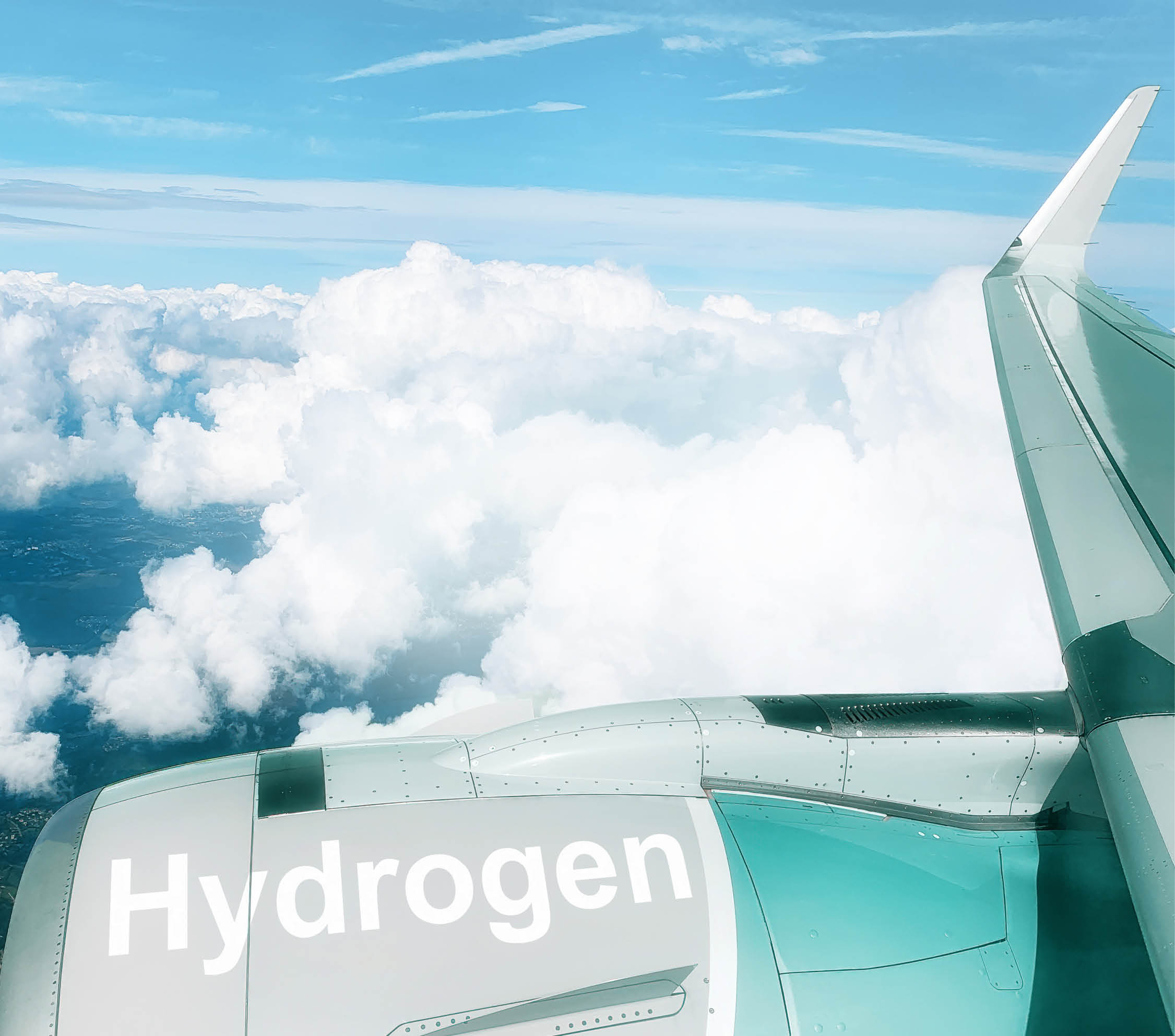
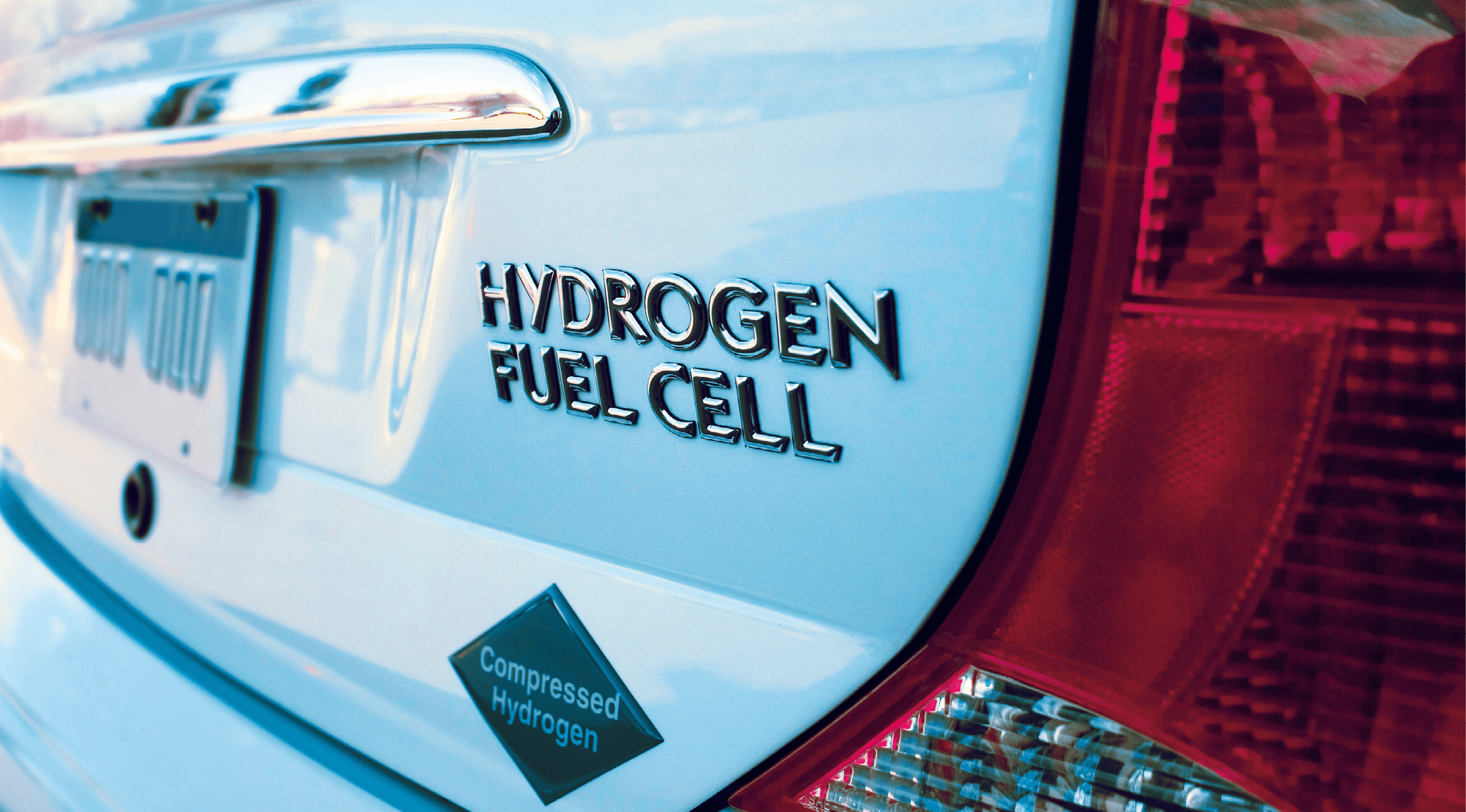
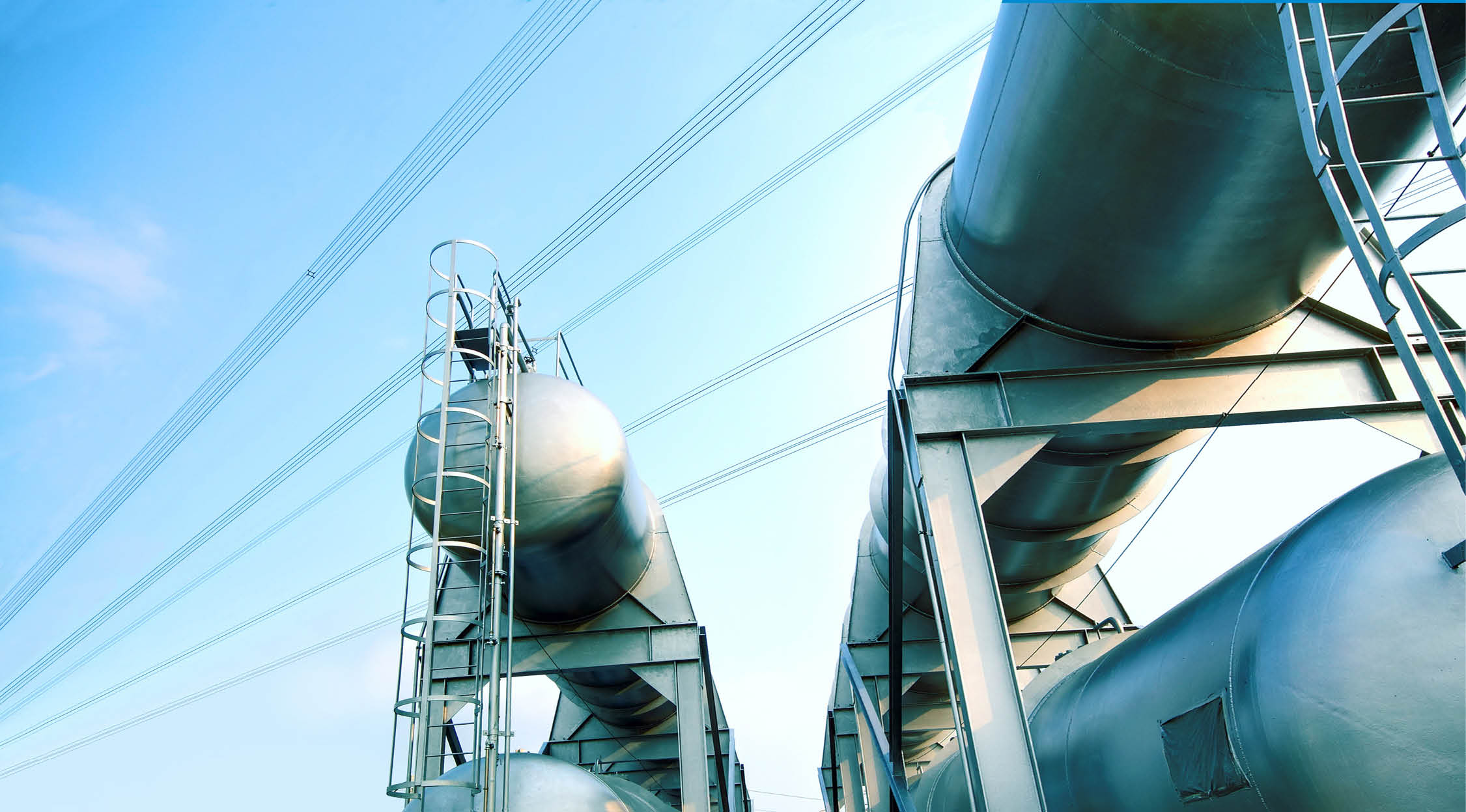





The EEG promotes green electricity and green hydrogen production and feed-in to the public grid per kW through a market premium. Funding is allocated by tender processes for hydrogen production and storage under the EEG 2023 starting in December 2023, including:
 Tenders for innovative renewable energy concepts with local hydrogen-based electricity storage, s.39o EEG 2023; and
Tenders for innovative renewable energy concepts with local hydrogen-based electricity storage, s.39o EEG 2023; and
 Installations for the generation of electricity from green hydrogen (reconversion to electricity), s.39p EEG 2023.
Installations for the generation of electricity from green hydrogen (reconversion to electricity), s.39p EEG 2023.
From 2028, it should be possible to integrate the use of hydrogen grids into the funding regime of the EEG.
The German government plans to build up to 10 GW of electrolysis capacity by 2030. This is expected to be sufficient to cover 30-50% of Germany's hydrogen demand.
Between 2020 and 2023, the Federal Government has drawn up, evaluated and updated a National Hydrogen Strategy (NHS) against the background of the European Hydrogen Strategy.
The NHS establishes coherent framework for the future production, transport and use of hydrogen and its derivatives, including the relevant research, innovations and investments.
In addition, an import strategy for hydrogen and its derivatives is being developed (see our German hydrogen strategy update – August 2023).
Implementing the NHS, the federal government has initiated a series of funding programmes (see the 'One-Stop-Shop').
German legislation has developed the applicable existing regulatory legal framework for the production, storage and reconversion of hydrogen and is developing this further, in particular to simplify funding of hydrogen projects jointly with renewable energy projects as well as permitting and administrative procedures.
The key focus areas of legislative development concerning hydrogen in Germany are:
 The sale of hydrogen to industry;
The sale of hydrogen to industry;
 International and national regulatory challenges to hydrogen supply contracts; and
International and national regulatory challenges to hydrogen supply contracts; and
 Emissions trading
Emissions trading

Key legislation
Key regulatory bodies
According to the German funding regime, funding for green hydrogen and electricity focuses on kilowatt hours produced. The construction of installations for the production and use of renewable energy and the production of components for electrolysers are also supported.
Green hydrogen production in Germany is promoted in particular by the EEG 2023 (see below) and by funding programmes as announced under the 'One-Stop-Shop'.
One-Stop-
Shop
The German legislator is responsible for relevant laws relating to green hydrogen and the Federal Government, through its ministries for directives based on those laws. The relevant ministries are:
 Federal Ministry of Economics and Climate Protection;
Federal Ministry of Economics and Climate Protection;
 The Federal Ministry for the Environment, Nature Conservation, Nuclear Safety and Consumer Protection; and
The Federal Ministry for the Environment, Nature Conservation, Nuclear Safety and Consumer Protection; and
 The Federal Ministry of Finance, Federal Ministry of Housing, Urban Development and Building.
The Federal Ministry of Finance, Federal Ministry of Housing, Urban Development and Building.
The laws are implemented by the relevant authorities of the states (Bundesländer) and their lower authorities within the decentralised German administrative organisation.
The promotion of hydrogen under the Renewable Energy Sources Act 2023 and regulations on hydrogen grids have a time horizon until 2028. The German government has set itself a target first hydrogen ramp-up by 2030 and wants to have significantly advanced the testing of hydrogen grids and the technology for the conduction and storage of hydrogen by this date.
Updates are expected by the German Hydrogen Economy, especially regarding funding programmes for hydrogen production and research projects for the use of hydrogen in the transport and industrial sectors.
In addition, European and German emissions trading will be subject to future changes. Regulations on national and international certificates of origin for hydrogen are to be developed and the regulation of hydrogen supply contracts is to be standardised.

Renewable Energy Sources
Act 2023
(EEG 2023)
Germany is promoting the implementation of the NHS with three hydrogen flagship projects for research and development of the production, transport and use of green hydrogen:
 The H2Giga project is dedicated to the mass production of water electrolysers.
The H2Giga project is dedicated to the mass production of water electrolysers.
 The H2Mare project is exploring ways to produce hydrogen and its downstream products directly at sea using wind turbines.
The H2Mare project is exploring ways to produce hydrogen and its downstream products directly at sea using wind turbines.
 The TransHyDE project develops, evaluates and demonstrates hydrogen transport technologies.
The TransHyDE project develops, evaluates and demonstrates hydrogen transport technologies.
These projects are still open to new partners. Applications can be sent via email to ptj-egf-h2@fz-juelich.de illustrating how to contribute to these projects.

Germany's flagship hydrogen projects
(Wasserstoffleitprojekte)
In Germany, the promotion of hydrogen is not regulated by a contract for difference but by a market premium within the framework of a tendering procedure or within the framework
of promotion programmes.
The sale of hydrogen to a third party is a prerequisite for receiving the
market premium.
The HPA is a non-regulated contract that is therefore subject to the autonomy of the parties. There is no standard contract model on the market.
 Energy storage applications
Energy storage applications
 Transport (as an alternative to petrol or diesel)
Transport (as an alternative to petrol or diesel)
 Industrial applications (as an alternative to fossil fuels)
Industrial applications (as an alternative to fossil fuels)
 Energy supply networks (blending with natural gas)
Energy supply networks (blending with natural gas)
Fossil fuel energy production and CO2 intensive industries are obliged to purchase CO2 allowances under the EU-ETS. The price of these certificates is continuously rising, pushing up production costs. For this purpose, CCfDs were created to compensate energy-intensive industries for these costs.
Conversion to green hydrogen leads to a reduction of CO2 emissions from energy production and industry, so that fewer CO2 certificates have to be purchased and thus costs decrease.
In addition to the EU-ETS, in Germany there is an obligation to reduce CO2 emissions for distributors of conventional fuels under the Federal Immission Control Act (BImSchG). The obligated distributor can fulfil this reduction obligation by placing green charging supply or green hydrogen on the market.
Selling opportunities

Hydrogen purchase agreements (HPAs) in Germany
The most important legal issues include:
 Guarantees and liability are core elements of the supply contract for the producer, particularly with regard to permits and regulatory requirements and quality ("green hydrogen" according to the requirements of the Delegated Act of the EU).
Guarantees and liability are core elements of the supply contract for the producer, particularly with regard to permits and regulatory requirements and quality ("green hydrogen" according to the requirements of the Delegated Act of the EU).
 Force majeure, termination rights, claims for damages, safety standards and insurance are also crucial.
Force majeure, termination rights, claims for damages, safety standards and insurance are also crucial.
 Due to the new sector a change in law regime and a price adjustment clause are also very relevant.
Due to the new sector a change in law regime and a price adjustment clause are also very relevant.
The most important commercial issues include:
 The contract should take into account the exact situation of hydrogen production and supply, including the supply of green electricity and water.
The contract should take into account the exact situation of hydrogen production and supply, including the supply of green electricity and water.
 The dimensioning of the electrolyser must be coordinated with the supply structure of the green electricity, the price of the renewable electricity and the purchase quantity of hydrogen by the customer to ensure full utilisation of the electrolyser.
The dimensioning of the electrolyser must be coordinated with the supply structure of the green electricity, the price of the renewable electricity and the purchase quantity of hydrogen by the customer to ensure full utilisation of the electrolyser.
 Due to the novelty of the sector and its rapid development,
Due to the novelty of the sector and its rapid development,
a change of law regime and price adjustment mechanism should be reflected in adjustment clauses.
 It should also specify how delivery of the hydrogen to the buyer will be effected and on what terms (as produced or forecast) as well as the term of the agreement.
It should also specify how delivery of the hydrogen to the buyer will be effected and on what terms (as produced or forecast) as well as the term of the agreement.
Key legal and commercial issues in HPAs in Germany
This programme by the Federal Ministry of Economics and Climate Protection (BMWK) runs from January 2021 until June 2024 and remains open to applications in the area of energy-intensive industries with process-related emissions for research and development projects.
Decarbonisation in industry
This programme by the Federal Ministry of Economics and Climate Protection (BMWK) deals with "Carbon Contracts for Difference" (CCfD) between the state and companies in energy-intensive industries, intending to compensate additional costs of climate-friendly production processes.
Carbon Contracts for Difference (CCfD) Programme

All funding opportunities for hydrogen in the German transport sector are gathered under the National Innovation Programme Hydrogen and Fuel Cell Technology (NIP). Funding is provided in the current (second) NIP phase until 2026 for projects in the fields of hydrogen and fuel cell technology.
Financial assistance for the production, storage and reconversion of green hydrogen in Germany are all subject to revision, expansion and curtailment. Support under the EEG 2023 will begin with the first tender in December 2023 and is initially regulated until 2028. The exact conditions for participation in the tender are expected in Q4 2023, to be issued as a statutory instrument.
Hydrogen in the German transport sector
The EU Innovation Fund/Hydrogen Bank is an EU-level fund aiming to bridge the cost gap between green hydrogen and hydrogen production based on carbon-emitting fossil fuels. Hydrogen producers are invited to bid for financial support based on their anticipated production of green hydrogen.
The EU Innovation Fund/
Hydrogen
Bank
Regulatory requirements for hydrogen energy installations and electrolysers










Support schemes


Selling hydrogen in Germany

Laws
 Federal Building Code "Baugesetzbuch" (BauGB): regulates the entitlement of a developer to be granted a building permit. According to the newly introduced section 249a BauGB, electrolysers are generally to be permitted in connection with existing wind farms and solar plants.
Federal Building Code "Baugesetzbuch" (BauGB): regulates the entitlement of a developer to be granted a building permit. According to the newly introduced section 249a BauGB, electrolysers are generally to be permitted in connection with existing wind farms and solar plants.
 Energy Industry Act "Energiewirtschaftsgesetz" (EnWG): defines the framework conditions for a secure, affordable, consumer-friendly and environmentally and environmentally compatible energy supply. The regulation of hydrogen networks is also included in the Act.
Energy Industry Act "Energiewirtschaftsgesetz" (EnWG): defines the framework conditions for a secure, affordable, consumer-friendly and environmentally and environmentally compatible energy supply. The regulation of hydrogen networks is also included in the Act.
 Renewable Energy Sources Act 2023 "Erneuerbare-Energien-Gesetz 2023" (EEG 2023): aims to promote the further development of technologies for electricity generation from renewable energy and to achieve cost reductions.
Renewable Energy Sources Act 2023 "Erneuerbare-Energien-Gesetz 2023" (EEG 2023): aims to promote the further development of technologies for electricity generation from renewable energy and to achieve cost reductions.
 Combined Heat and Power Act 2023 "Kraft-Wärme-Kopplungsgesetz 2023"(KWKG 2023): serves to increase electricity generation from CHP plants in the interest of energy saving as well as environmental and climate protection.
Combined Heat and Power Act 2023 "Kraft-Wärme-Kopplungsgesetz 2023"(KWKG 2023): serves to increase electricity generation from CHP plants in the interest of energy saving as well as environmental and climate protection.
 Energy Financing Act "Energiefinanzierungsgesetz" (EnFG): replaces separate regulations on the reduction of electricity StromNEV (ordinance on grid charges) for the reduction of the KWKG, StromNEV and offshore grid surcharges. It also regulates the determination and balancing of financing requirements.
Energy Financing Act "Energiefinanzierungsgesetz" (EnFG): replaces separate regulations on the reduction of electricity StromNEV (ordinance on grid charges) for the reduction of the KWKG, StromNEV and offshore grid surcharges. It also regulates the determination and balancing of financing requirements.
 Federal Emission Control Act "Bundesimmissionsschutzgesetz" (BImSchG): aims to protect humans, animals and plants, the soil, water, the atmosphere as well as cultural and other material assets from harmful effects on the environment.
Federal Emission Control Act "Bundesimmissionsschutzgesetz" (BImSchG): aims to protect humans, animals and plants, the soil, water, the atmosphere as well as cultural and other material assets from harmful effects on the environment.
 Coal-fired-Power Generation Termination Act "Kohleverstromungsbeendigungsgesetz" (KVBG):
Coal-fired-Power Generation Termination Act "Kohleverstromungsbeendigungsgesetz" (KVBG):
contains a package of measures to reduce the use of coal
to generate electrical energy, in particular tenders and
statutory reduction paths.
 Wind Energy at Sea Act "Windenergie-auf-See-Gesetz" (WindSeeG): aims to expand the use of wind energy at sea, taking into account nature conservation, shipping and offshore connection lines. Planning and approval of hydrogen pipelines falls within the scope of the Act.
Wind Energy at Sea Act "Windenergie-auf-See-Gesetz" (WindSeeG): aims to expand the use of wind energy at sea, taking into account nature conservation, shipping and offshore connection lines. Planning and approval of hydrogen pipelines falls within the scope of the Act.
 LNG Acceleration Act "LNG-Beschleunigungsgesetz" (LNGG): aims to secure national energy supply through the rapid integration of LNG into the transmission network. It concerns the acceleration of the approval of the construction and commissioning of projects. From 2044 onwards, approval of the continued operation of plants should only be possible if they are operated with climate-neutral hydrogen.
LNG Acceleration Act "LNG-Beschleunigungsgesetz" (LNGG): aims to secure national energy supply through the rapid integration of LNG into the transmission network. It concerns the acceleration of the approval of the construction and commissioning of projects. From 2044 onwards, approval of the continued operation of plants should only be possible if they are operated with climate-neutral hydrogen.
 Greenhouse Gas Emissions Trading Act "Treibhausgasemissionshandelsgesetz" (TEHG): serves to implement Directive 2003/87/EC and creates the legal basis for a functioning EU-ETS at national level. The installations covered include those for the generation of energy or the propulsion of working machines through the use of hydrogen.
Greenhouse Gas Emissions Trading Act "Treibhausgasemissionshandelsgesetz" (TEHG): serves to implement Directive 2003/87/EC and creates the legal basis for a functioning EU-ETS at national level. The installations covered include those for the generation of energy or the propulsion of working machines through the use of hydrogen.
 Fuel Emissions Trading Act "Brennstoffemissionshandelsgesetz" (BEHG): creates the basis for allowance trading for fuel emissions and to provide for the pricing of these emissions insofar as they are not covered by the EU-ETS.
Fuel Emissions Trading Act "Brennstoffemissionshandelsgesetz" (BEHG): creates the basis for allowance trading for fuel emissions and to provide for the pricing of these emissions insofar as they are not covered by the EU-ETS.
 DVGW Technical Regulations / worksheets for the gas and water industry: sets technical regulations of the DVGW for gas and hydrogen, which are crucial for the construction and operation of energy installations.
DVGW Technical Regulations / worksheets for the gas and water industry: sets technical regulations of the DVGW for gas and hydrogen, which are crucial for the construction and operation of energy installations.
Legal Ordinances
 Hydrogen Network- Charges Ordinance "Wasserstoffnetzentgeltverordnung" (WasserstoffNEV): regulates operators of hydrogen grids subject to the corresponding regulatory requirements in the EnWG and
Hydrogen Network- Charges Ordinance "Wasserstoffnetzentgeltverordnung" (WasserstoffNEV): regulates operators of hydrogen grids subject to the corresponding regulatory requirements in the EnWG and
sets the basis for determining grid costs and grid fees for accessing hydrogen grids.
 Gas Network Charges Ordinance "Gasnetzentgeltverordnung (GasNEV): sets out the method for determining network fees for accessing gas supply networks.
Gas Network Charges Ordinance "Gasnetzentgeltverordnung (GasNEV): sets out the method for determining network fees for accessing gas supply networks.
 Gas Network Access Ordinance "Gasnetzzugangsverordnung" (GasNZV): regulates, in the form of the authorisation in the EnWG, the conditions under which grid operators grant grid access to their pipeline grids to grid access holders.
Gas Network Access Ordinance "Gasnetzzugangsverordnung" (GasNZV): regulates, in the form of the authorisation in the EnWG, the conditions under which grid operators grant grid access to their pipeline grids to grid access holders.
 Ordinance on the Proof of Origin and Regional Guarantees "Herkunfts- und Regionalnachweis-Durchführungsverordnung" (HkRNDV): primarily serves to shape the requirements of the EEG on proof of origin and regional certificates. It also contains regulations regarding the verification of electricity consumption for the production of green hydrogen within the scope of
Ordinance on the Proof of Origin and Regional Guarantees "Herkunfts- und Regionalnachweis-Durchführungsverordnung" (HkRNDV): primarily serves to shape the requirements of the EEG on proof of origin and regional certificates. It also contains regulations regarding the verification of electricity consumption for the production of green hydrogen within the scope of
the EnFG.
 Ordinance on Installations Requiring a Permit "Verordnung über genehmigungsbedürftige Anlagen" (4th BImSchV): specifies which installations require a permit for construction and operation. Electrolysis facilities require a licensing procedure with public participation in accordance with § 10 BImSchG.
Ordinance on Installations Requiring a Permit "Verordnung über genehmigungsbedürftige Anlagen" (4th BImSchV): specifies which installations require a permit for construction and operation. Electrolysis facilities require a licensing procedure with public participation in accordance with § 10 BImSchG.
 Ordinance on the Quality and Distinction of Fuels "Verordnung über die Beschaffenheit und die Auszeichnung der Qualität von Kraft- und Brennstoffen" (10th BImSchV): sets out in detail requirements for fuels, including hydrogen, that must be met for the fuel to be placed on the market for commercial purposes or as part of an economic activity vis-à-vis end consumers.
Ordinance on the Quality and Distinction of Fuels "Verordnung über die Beschaffenheit und die Auszeichnung der Qualität von Kraft- und Brennstoffen" (10th BImSchV): sets out in detail requirements for fuels, including hydrogen, that must be met for the fuel to be placed on the market for commercial purposes or as part of an economic activity vis-à-vis end consumers.
 Major Accidents Ordinance "Störfall-Verordnung" (12th BImSchV): defines hydrogen as a hazardous substance and sets basic requirements for the prevention of hazardous incidents.
Major Accidents Ordinance "Störfall-Verordnung" (12th BImSchV): defines hydrogen as a hazardous substance and sets basic requirements for the prevention of hazardous incidents.
 Ordinance on the Crediting of Electricity-Based Fuels and Co-Processed Biogenic Oils to the Greenhouse Gas Quota "Verordnung zur Anrechnung von strombasierten Kraftstoffen und mitverarbeiteten biogenen Ölen auf die Treibhausgasquote (37th BImSchV): regulates the crediting of electricity-based fuels and co-processed biogenic oils towards the obligation to reduce greenhouse gas emissions in the transport sector resulting
Ordinance on the Crediting of Electricity-Based Fuels and Co-Processed Biogenic Oils to the Greenhouse Gas Quota "Verordnung zur Anrechnung von strombasierten Kraftstoffen und mitverarbeiteten biogenen Ölen auf die Treibhausgasquote (37th BImSchV): regulates the crediting of electricity-based fuels and co-processed biogenic oils towards the obligation to reduce greenhouse gas emissions in the transport sector resulting
from the BImSchG.
 Ordinance laying down further provisions on greenhouse gas reduction for fuels "Verordnung zur Festlegung weiterer Bestimmungen zur Treibhausgasreduzierung bei Kraftstoffen" (38th BImSchV): regulates the modalities for fulfilling the greenhouse gas emission reduction obligation and reporting obligations in the transport sector.
Ordinance laying down further provisions on greenhouse gas reduction for fuels "Verordnung zur Festlegung weiterer Bestimmungen zur Treibhausgasreduzierung bei Kraftstoffen" (38th BImSchV): regulates the modalities for fulfilling the greenhouse gas emission reduction obligation and reporting obligations in the transport sector.
 Allocation Ordinance 2020 "Zuteilungsverordnung" (ZuV 2020): serves to implement the European requirements for the free allocation of allowances under the EU-ETS and to specify individual requirements of the TEHG. It contains allocation rules for existing installations, provisions for the free allocation of allowances to new market participants and requirements for the exemption of small emitters. The allocation rules address both the production of hydrogen and its use as a fuel.
Allocation Ordinance 2020 "Zuteilungsverordnung" (ZuV 2020): serves to implement the European requirements for the free allocation of allowances under the EU-ETS and to specify individual requirements of the TEHG. It contains allocation rules for existing installations, provisions for the free allocation of allowances to new market participants and requirements for the exemption of small emitters. The allocation rules address both the production of hydrogen and its use as a fuel.
 Ordinance on Hazardous Substances "Gefahrenstoffverordnung" (GefStoffV): aims to protect people and the environment from substance-related damage.
Ordinance on Hazardous Substances "Gefahrenstoffverordnung" (GefStoffV): aims to protect people and the environment from substance-related damage.
Strategies
 National Hydrogen Strategy (NHS)
National Hydrogen Strategy (NHS)
 Industry strategy 2023
Industry strategy 2023
 Climate Protection Plan 2050
Climate Protection Plan 2050
 Climate Protection Programme 2022
Climate Protection Programme 2022
 Climate Protection Programme 2030
Climate Protection Programme 2030
German legislation has developed the applicable existing regulatory legal framework for the production, storage and reconversion of hydrogen and is developing this further...


Conversion to green hydrogen leads to a reduction of CO2 emissions from energy production and industry, so that fewer CO2 certificates have to be purchased and thus costs decrease.



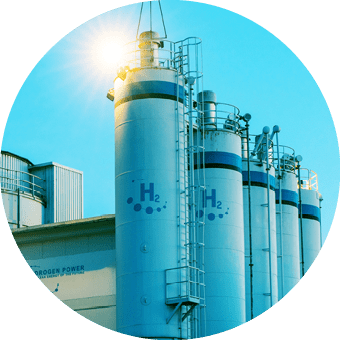
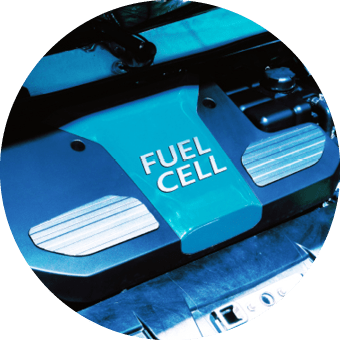







Scroll down on the right
to read
more